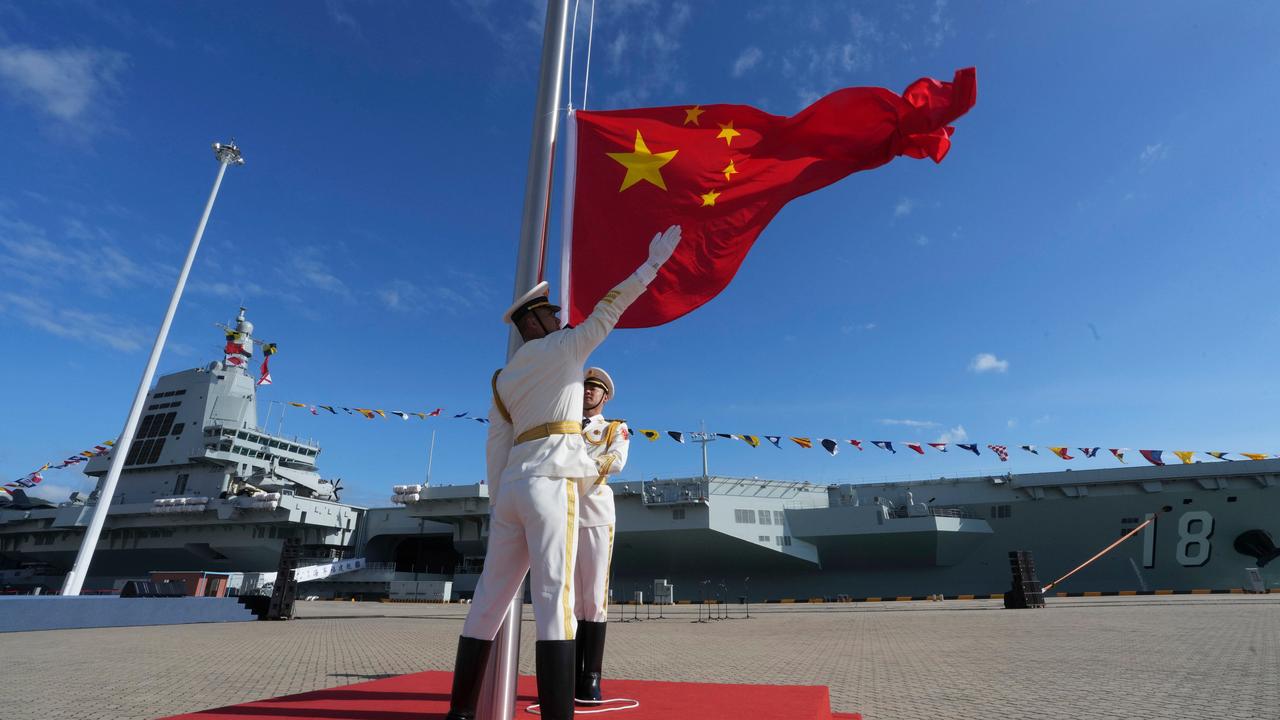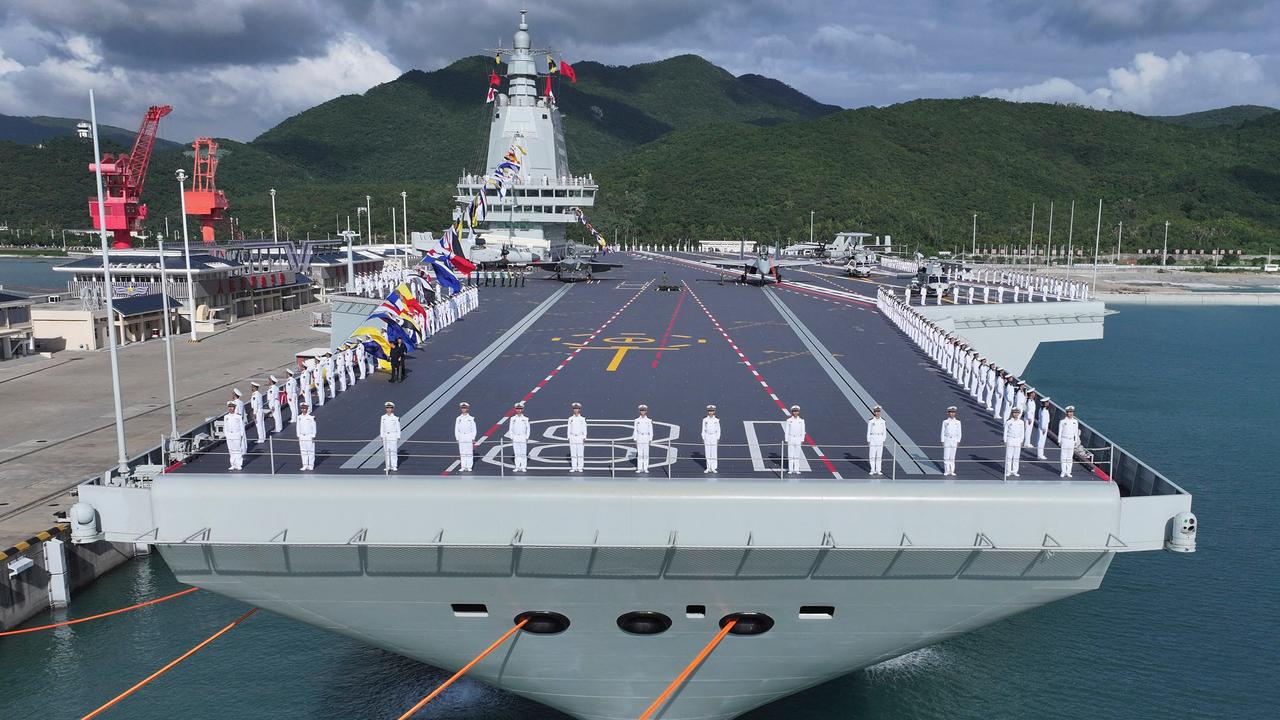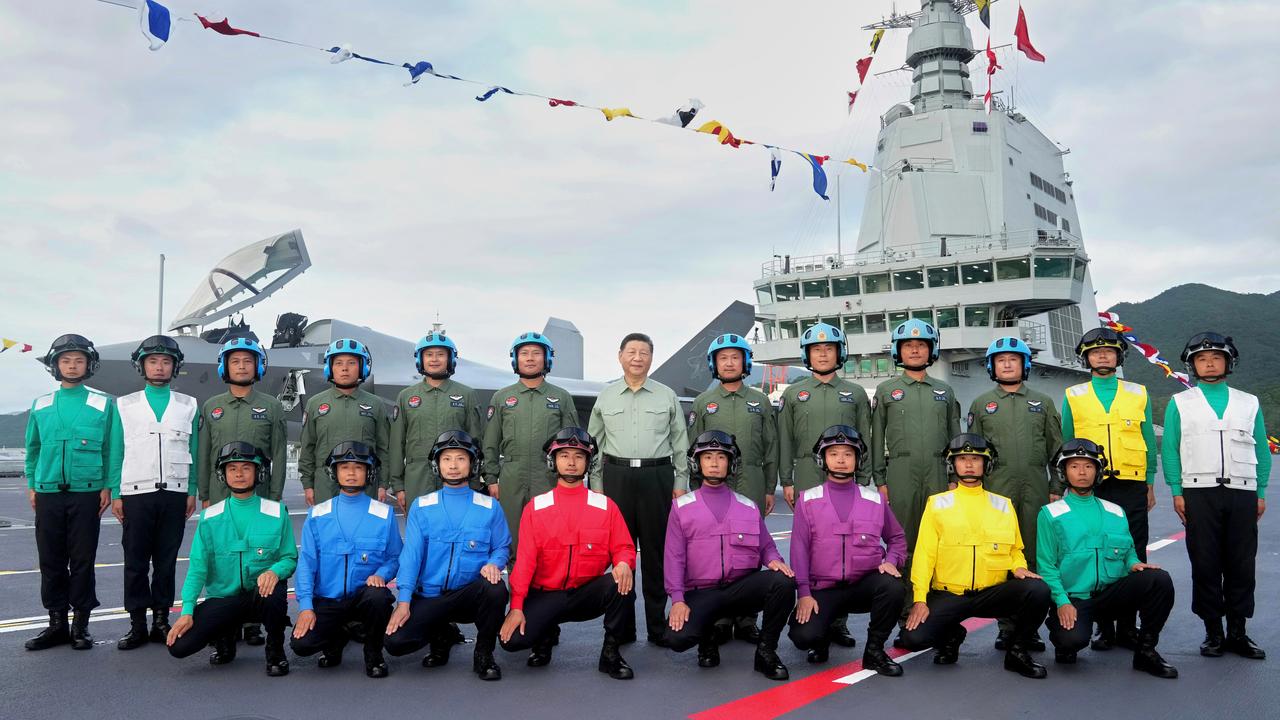
China has commissioned its latest aircraft carrier after extensive sea trials, adding a ship that experts say will help what is already the world’s largest navy expand its power farther beyond its own waters.
The official Xinhua news agency said the Fujian had been commissioned on Wednesday at a naval base on southern China’s Hainan island in a ceremony attended by President Xi Jinping.
The Fujian is China’s third carrier and the first that it both designed and built itself.
It is perhaps the most visible example so far of Xi’s massive military overhaul and expansion that aims to have a modernised force by 2035 and one that is “world class” by mid century — which most take to mean capable of going toe-to-toe with the United States.
With it, Beijing takes another step toward closing the gap with the US Navy and its carrier fleet and network of bases that allow it to maintain a presence around the world.
“Carriers are key to Chinese leadership’s vision of China as a great power with a blue-water navy,” or one that can project power far from its coastal waters, said Greg Poling, director of the Asia Maritime Transparency Initiative at the Centre for Strategic and International Studies.
China wants to contest waters as far as Guam.
For China’s navy, one goal is to dominate the near waters of the South China Sea, East China Sea and Yellow Sea around the so-called First Island Chain, which runs south through Japan, Taiwan and the Philippines.
But deeper into the Pacific, it also wants to be able to contest control of the Second Island Chain, where the US has important military facilities on Guam and elsewhere, Poling said.
“A carrier doesn’t really help you in the First Island Chain, but it’s key to that contest, if you want one, with the Americans in the wider Indo-Pacific,” Poling said.
China’s “increasingly capable military” and ability to “project power globally” are reasons the Pentagon, in its latest report to Congress continued to call it “the only competitor to the United States with the intent and, increasingly, the capacity to reshape the international order”.

At the same time, it is Beijing’s right to “transform its navy into a blue-water strategic navy commensurate with China’s national strength,” said Song Zhongping, a Hong Kong-based military affairs expert.
“China’s carriers cannot just operate near home; they must operate in the distant oceans and far seas to carry out various training and support missions,” Song said.
“China is a great power and our overseas interests span the globe; we need to be globally present.”
News that the Fujian had been commissioned was met with wariness in nearby Japan.
Minoru Kihara, a former defence minister and now chief cabinet secretary in Prime Minister Sanae Takaichi’s new government, said it underscores that China is “extensively and rapidly strengthening its military power without transparency”.
“We believe that China’s military intends to advance its operational capability at distant sea and air by strengthening sea power,” he told reporters.
He emphasised that Japan was watching China’s military activity and would “calmly but decisively respond” if necessary.
One possibility that raises concerns in foreign capitals is a possible Chinese blockade or invasion of the democratically self-governed island of Taiwan, which China claims as its own territory and which leader Xi Jinping, has not ruled out taking by force.

Though the island sits right off of China’s coast, if China had the ability to position an aircraft carrier group or groups around the Second Island Chain — between Taiwan and the US Pacific Fleet headquarters in Hawaii — that could delay possible American military assistance in the event of a Chinese attack.
“They want those aircraft carriers to play a part in kind of extending the strategic perimeter further out from China, and one of the important things that an aircraft carrier can do is extend the range of China’s domain awareness to keep an eye on activities in the air, on the sea, and below the sea,” said Brian Hart, deputy director of CSIS’s China Power Project
With the Fujian, China’s warplanes could deploy far from its shores.
China’s first aircraft carrier, the Liaoning, was Soviet made and its second, the Shandong, was built in China but based on the Soviet model.
Both use older-style ski-jump type systems to help planes take flight.
The Fujian skips past the steam catapult technology used on most American carriers to employ an electromagnetic launch system found only on the latest US Navy Ford-class carriers.
The system causes less stress to the aircraft and the ship, allows for more precise control over speed and can launch a wider range of aircraft than the steam system.